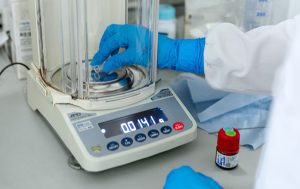Good Laboratory Practice
Course Summary
The purpose of GLP is to provide assurance of the quality and reliability of nonclinical study data. GLP covers the planning, performance, monitoring, recording and reporting of studies. Regulatory authorities typically require GLP rules to be followed for nonclinical studies intended to support an application for approval of clinical research or marketing of a product containing the test item.
This course outlines the history of GLP and explains why it is important, identifies the penalties that may be incurred for noncompliance, and sets out requirements that need to be met. Learners are also referred to the two main sources of GLP rules: The Organisation for Economic Co-operation and Development’s Principles on Good Laboratory Practice and US Regulation 21 CFR 58: Good Laboratory Practice for Nonclinical Laboratory Studies.

£79.00 Original price was: £79.00.£69.00Current price is: £69.00. exc. VAT
Purchasing Information
When you have completed your course order, Zenosis will finalise the setup of your course materials and contact you on the email address that you provide in your order. You can expect this process to be completed within one business day (using the UK business calendar) of completing your payment.
It is therefore essential that you use your real email address for your order, or indicate in the purchase notes the email address to be used for the course set-up, and check that any messages from Zenosis or grapl are not lost in your junk or spam folder.
You will have access to the course module(s) for a period of 180 days after your purchase is complete.
Detailed Course Information
• Explain the purpose of Good Laboratory Practice (GLP) and describe the development of the US GLP Regulation and the OECD Principles of GLP
• Identify consequences of failure to comply with GLP
• Specify GLP requirements for laboratory organisation and the responsibilities of personnel
• Specify GLP requirements for the planning and performance of studies
• Specify GLP requirements for reporting of study results and the storage and retention of records and materials
• Identify typical findings of regulatory inspections of laboratories
This module provides essential learning for all personnel of analytical laboratories, especially those working in test facilities undertaking nonclinical studies.
• History and purpose of GLP:
– The purpose of GLP in providing assurance of the integrity of nonclinical data.
– The development and application of the US GLP Regulation and the OECD Principles of GLP.
– Consequences of failure to comply with GLP
• Test facility organisation and personnel:
– Responsibilities, under GLP, of test facility management, the study director, laboratory personnel, and the quality assurance unit/programme.
• Planning and performance of studies:
– GLP requirements for laboratory facilities, equipment, SOPs, care of animals and other test systems, test and reference items / test and control articles, study plans/protocols, and study conduct.
• Study reporting and post-study considerations:
– GLP requirements for reporting of study results and for storage and retention of records and materials.
– Regulatory inspection of test facilities.
• Assessment
– Multiple-choice mastery assessment.
